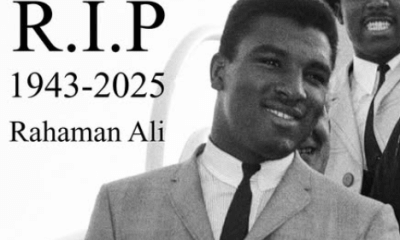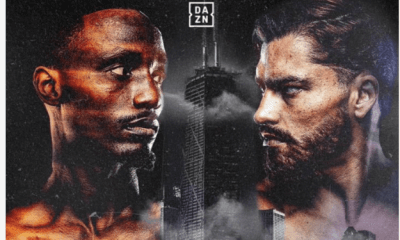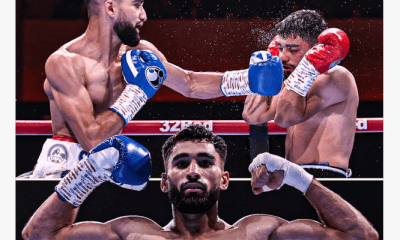Featured Articles
A Tactical Change Paid Dividends for Canelo Alvarez vs. GGG
This past Saturday night Canelo Alvarez 50-1-2 (34) won a majority decision (114-114 and 115-113 twice) over Gennady Golovkin 38-1-1 (33) to capture Golovkin’s
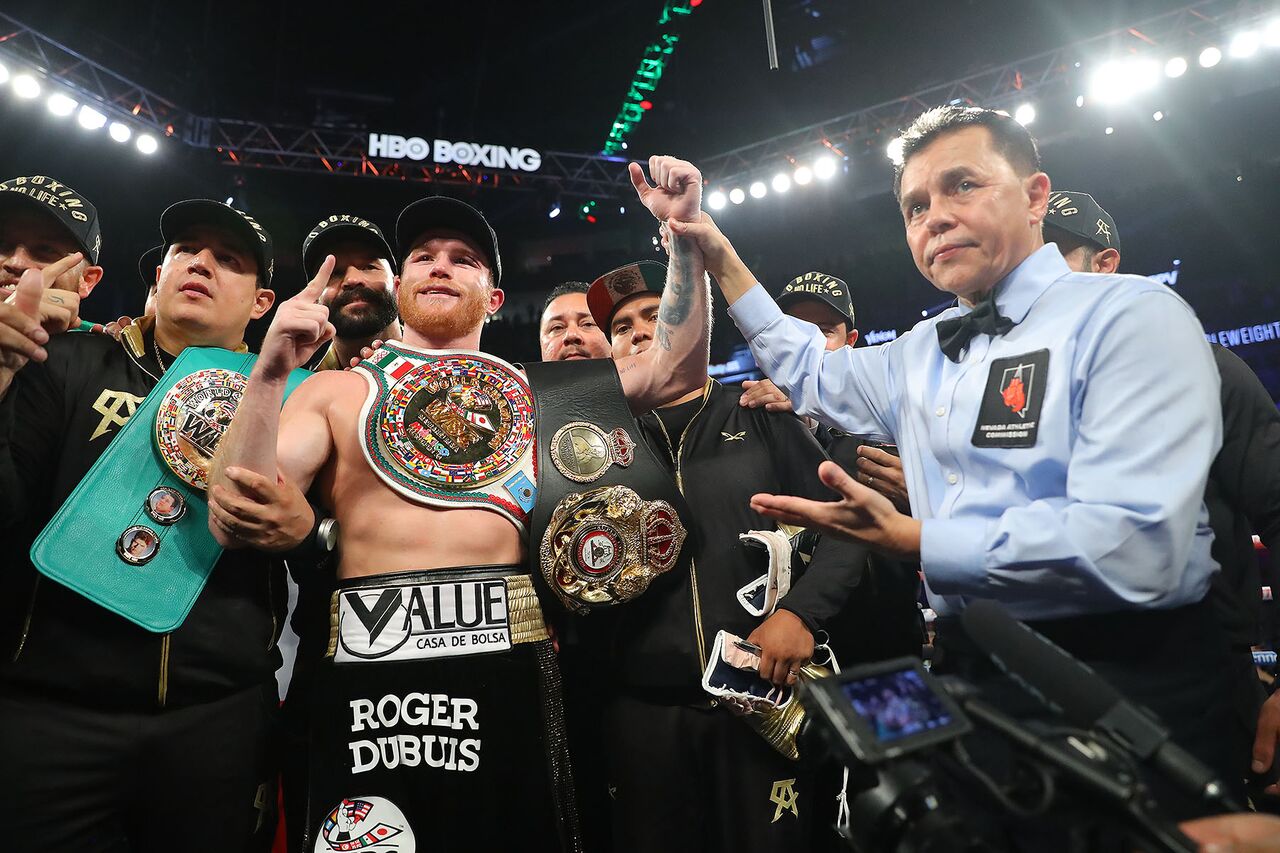
This past Saturday night Canelo Alvarez 50-1-2 (34) won a majority decision (114-114 and 115-113 twice) over Gennady Golovkin 38-1-1 (33) to capture Golovkin’s three middleweight title belts at the T-Mobile Arena in Las Vegas. And like their first fight last September that ended in a majority draw, the decision has provoked controversy.
The amazing thing about Canelo and GGG is how evenly they’re matched and difficult their fights are to score. I scored the rematch 6-5-1 Canelo, (after seeing the first meeting 8-4 GGG) but it was so close that it could as easily gone to Golovkin by a point. But let’s get one thing clear: This fight was too close to be considered a robbery regardless of who had their hand raised. And when you take into account that Canelo forced Golovkin to fight in retreat, landed the more eye-catching shots, worked his body from the onset, and that Golovkin’s face was much more puffed up and lumpy at the end (although Canelo was cut), no way was the decision in favor of Canelo an injustice.
Stylistically, GGG is an attacker and Canelo is a counter-puncher. However, Canelo answered Golovkin’s trainer Abel Sanchez’s call and didn’t run. No, he didn’t run in the first fight either, but in this fight, unlike the first, Canelo moved forward and initiated the exchanges. Golovkin’s jab, which is always reliable, worked overtime and kept Canelo from owning the exchanges, but like most attackers, GGG can’t hit as hard or be as effective if forced back. And because of that Canelo had no reservation in regards to forcing the fight. So when looking at what stood out the most, it was Canelo’s more imaginative offense and body punching, thus forcing Golovkin to go away from what he’s done best and in every other fight of his career, and that no doubt influenced the judges. Moreover, Golovkin noticeably flinched a few times at feints and was unwilling to pay the price of going to the body entailed to win.
Prior to the rematch it was said in this space how two things would unfold when they met the second time. Quoting from the June 20th TSS preview:
Based on the strategic options for both, Canelo has more room to be better and change things up to level the fight. And then there’s the business side of the equation and I’ve been around too long to fathom that if it’s closer this time GGG will get the decision. A Canelo win sets the rubber match up perfectly because in the eyes of boxing fans and PPV buyers they’ll view them as being 1-1. For the reasons stated above, as much as I’d like to be wrong (and there’s no fun pouring cold water on something so widely anticipated), I don’t think that will be the case. It’s a monumental reach for me to think GGG can win a decision unless he beats Canelo beyond recognition – which I don’t believe he can. Therefore Canelo-GGG goes the distance and Alvarez, being more competitive this time, gets the decision and that sets up the rubber match for Cinco De Mayo weekend 2019.
The fact is, Canelo being the more versatile fighter completely flipped the script after fighting mostly in retreat and with his back to the ropes during most of their first encounter. His aggression and willingness to stand his ground the way GGG did the first time, projected that Canelo was the more willing fighter and he was obviously rewarded for that. Granted, Golovkin really dug down and showed his strong constitution during the second half of the fight after being told by his corner he was losing. He fought a terrific fight, as did Canelo, but it wasn’t enough for GGG because he left too many rounds up for grabs, which was suicide with Canelo forcing the fight.
The result shouldn’t have come as a surprise to anyone, especially since the fight was so close and could come down to whose style you liked better or who you were rooting for. There was no definitive winner of this fight. Sure, a draw would’ve been a fair call. The problem with that, however, is that Team Golovkin knew they had to be more assertive and erase any semblance of doubt this time, due to GGG being excoriated in some circles for not getting off enough in the last bout and never slamming the door to prevent Canelo from tightening the fight with a rally, the way he did down the stretch. This time GGG got off a little more, but that was because he was mostly fighting to prevent Canelo from overwhelming him with his aggression. In a way it’s ironic how Canelo accepted the challenge and fought Golovkin in a more macho way and it knocked Golovkin off his game.
One tries not to be redundant, but like the NFL, NBA, NHL and MLB…..boxing is a business and is star driven. Saul “Canelo” Alvarez is a superstar fighter in the eyes of the boxing establishment and many fans. There’s no guesswork needed to grasp that it’s good for business for him to keep winning. His determination, skill and toughness exhibited against a monster like Golovkin might endear him to fans more than ever. Canelo fought a better fight than the first time and put to rest the rumor that he was aided by PEDS.
The net result is exactly what the boxing establishment, not the fans, needed. And that was a win for Canelo in a fight where it was tough to pick the winner with Canelo acting as more the predator than the prey. By forcing GGG to break more exchanges, working both the body and head, along with never appearing tired or overwhelmed, it was just enough to win the borderline rounds in the eyes of the judges and tilt the fight in his favor. In fact, Golovkin, over Canelo’s protest, had Dave Moretti as a judge for the fight. He was the only judge who scored the first clash for Gennady. And this time he scored it for Canelo and may have tipped his hand when he gave the 12th round to Canelo, perhaps knowing it could swing the fight in his favor….and it did.
This decision cannot be lambasted like others we’ve seen. GGG didn’t suffer a loss of esteem in losing and Canelo finally has a statement win over a marque fighter. They’ll fight a third time and it will be perceived as a rubber match. Golovkin will be almost another year older and less than what he was this past weekend and Canelo will win more conclusively while avoiding the young lions nipping at his heels named Charlo, Saunders and Andrade.
Because boxing is and always has been star driven, Gennady just can’t put enough separation between he and Canelo to get the decision. Their rematch is one of the few fights I’ve seen that really could’ve gone either way – it’s just that a push usually goes to the combatant who is better for business.
The next time there’s a real close fight on paper, and it’s unlikely to end in a knockout or stoppage, you must ask what result better sets up the next big bout. The formula isn’t fool proof. De La Hoya-Trinidad and Pacquiao-Bradley I are glaring exceptions, but more often than not you’ll cash your ticket. In this case a Canelo win sets up fight three more than a Golovkin win would’ve….and knowing GGG won’t walk away from the fortune at stake, he’ll go for it.
Photo credit: Tom Hogan / Hoganphotos / Golden Boy Promotions
Between 1977 and 1982, Frank Lotierzo had over 50 fights in the middleweight division. He trained at Joe Frazier’s gym in Philadelphia under the tutelage of the legendary George Benton. Before joining The Sweet Science his work appeared in several prominent newsstand and digital boxing magazines and he hosted “Toe-to-Toe” on ESPN Radio. Lotierzo can be contacted at GlovedFist@gmail.com
Check out more boxing news on video at The Boxing Channel
-

 Featured Articles4 weeks ago
Featured Articles4 weeks agoResults and Recaps from New York Where Taylor Edged Serrano Once Again
-

 Featured Articles1 week ago
Featured Articles1 week agoThe Hauser Report: Zayas-Garcia, Pacquiao, Usyk, and the NYSAC
-
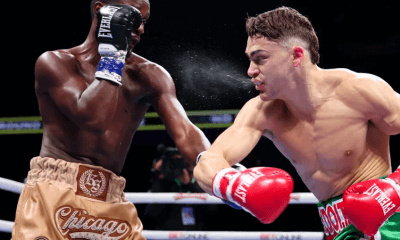
 Featured Articles4 days ago
Featured Articles4 days agoOscar Duarte and Regis Prograis Prevail on an Action-Packed Fight Card in Chicago
-

 Featured Articles4 weeks ago
Featured Articles4 weeks agoResults and Recaps from NYC where Hamzah Sheeraz was Spectacular
-
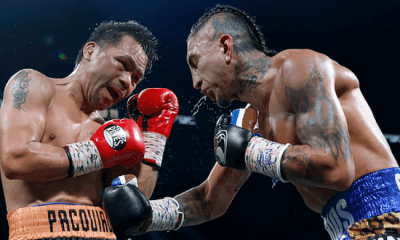
 Featured Articles3 weeks ago
Featured Articles3 weeks agoManny Pacquiao and Mario Barrios Fight to a Draw; Fundora stops Tim Tszyu
-

 Featured Articles4 weeks ago
Featured Articles4 weeks agoPhiladelphia Welterweight Gil Turner, a Phenom, Now Rests in an Unmarked Grave
-
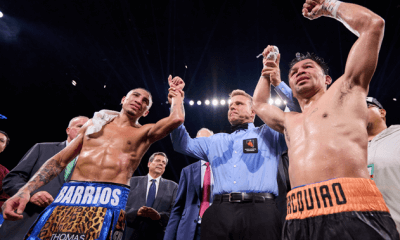
 Featured Articles2 weeks ago
Featured Articles2 weeks agoArne’s Almanac: Pacquiao-Barrios Redux
-

 Featured Articles1 week ago
Featured Articles1 week agoRemembering Dwight Muhammad Qawi (1953-2025) and his Triumphant Return to Prison




